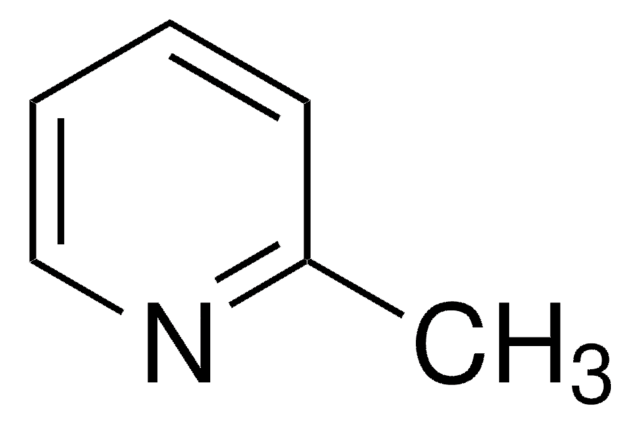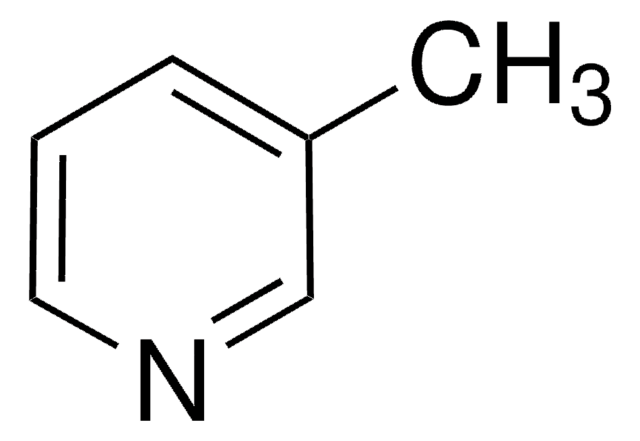74350
2-Picoline
analytical standard
Synonym(s):
α-Picoline, 2-Methylpyridine, NSC 3409
About This Item
Recommended Products
grade
analytical standard
Quality Level
vapor density
3.2 (vs air)
vapor pressure
10 mmHg ( 24.4 °C)
Assay
≥98.5% (GC)
autoignition temp.
995 °F
shelf life
limited shelf life, expiry date on the label
expl. lim.
8.6 %
technique(s)
HPLC: suitable
gas chromatography (GC): suitable
impurities
≤0.5% water
refractive index
n20/D 1.499-1.502
n20/D 1.500 (lit.)
bp
128-129 °C (lit.)
mp
−70 °C (lit.)
density
0.943 g/mL at 25 °C (lit.)
application(s)
cleaning products
cosmetics
flavors and fragrances
food and beverages
personal care
format
neat
SMILES string
Cc1ccccn1
InChI
1S/C6H7N/c1-6-4-2-3-5-7-6/h2-5H,1H3
InChI key
BSKHPKMHTQYZBB-UHFFFAOYSA-N
Looking for similar products? Visit Product Comparison Guide
General description
Application
- Cigarette smoke using reversed-phase high-performance liquid chromatography–electrospray ionization tandem mass spectrometric method (RP-HPLC–ESI-MS/MS).
- Chinese faint-scent cigarettes using gas chromatography–mass spectrometry (GC–MS) technique.
Signal Word
Danger
Hazard Statements
Precautionary Statements
Hazard Classifications
Acute Tox. 3 Dermal - Acute Tox. 4 Inhalation - Acute Tox. 4 Oral - Eye Dam. 1 - Flam. Liq. 3 - Skin Corr. 1C - STOT SE 3
Target Organs
Respiratory system
Storage Class Code
3 - Flammable liquids
WGK
WGK 1
Flash Point(F)
84.2 °F - closed cup
Flash Point(C)
29 °C - closed cup
Choose from one of the most recent versions:
Already Own This Product?
Find documentation for the products that you have recently purchased in the Document Library.
Protocols
Chlorobenzilate; 4-Aminobiphenyl; 2-Fluorobiphenyl; N-Nitrosopyrrolidine; 1,2,4,5-Tetrachlorobenzene; 3-Methylcholanthrene; Phenacetin
Our team of scientists has experience in all areas of research including Life Science, Material Science, Chemical Synthesis, Chromatography, Analytical and many others.
Contact Technical Service








